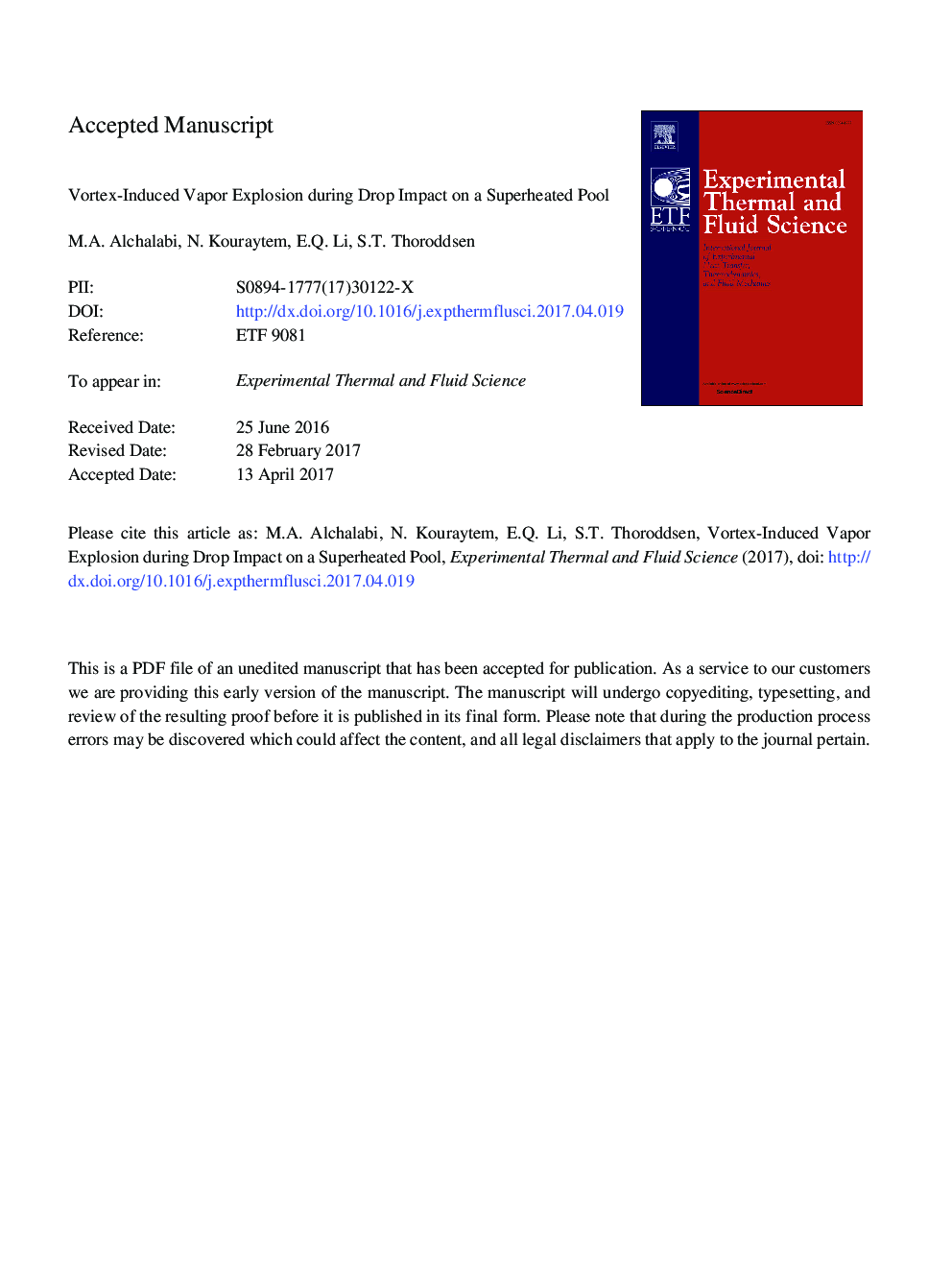| Article ID | Journal | Published Year | Pages | File Type |
|---|---|---|---|---|
| 4992694 | Experimental Thermal and Fluid Science | 2017 | 13 Pages |
Abstract
Ultra high-speed imaging is used to investigate the vapor explosion when a drop impacts onto a high-temperature pool. The two liquids are immiscible, a low boiling-temperature perfluorohexane drop, at room temperature, which impacts a high boiling-temperature soybean-oil pool, which is heated well above the boiling temperature of the drop. We observe different regimes: weak and strong nucleate boiling, film boiling or Leidenfrost regime and entrainment followed by vapor explosion. The vapor explosions were seen to depend on the formation of a rotational flow at the edge of the impact crater, near the pool surface, which resembles a vortex ring. This rotational motion entrains a thin sheet of the drop liquid, to become surrounded by the oil. In that region, the vapor explosion starts at a point after which it propagates azimuthally along the entire periphery at high speed.
Related Topics
Physical Sciences and Engineering
Chemical Engineering
Fluid Flow and Transfer Processes
Authors
M.A. Alchalabi, N. Kouraytem, E.Q. Li, S.T. Thoroddsen,
